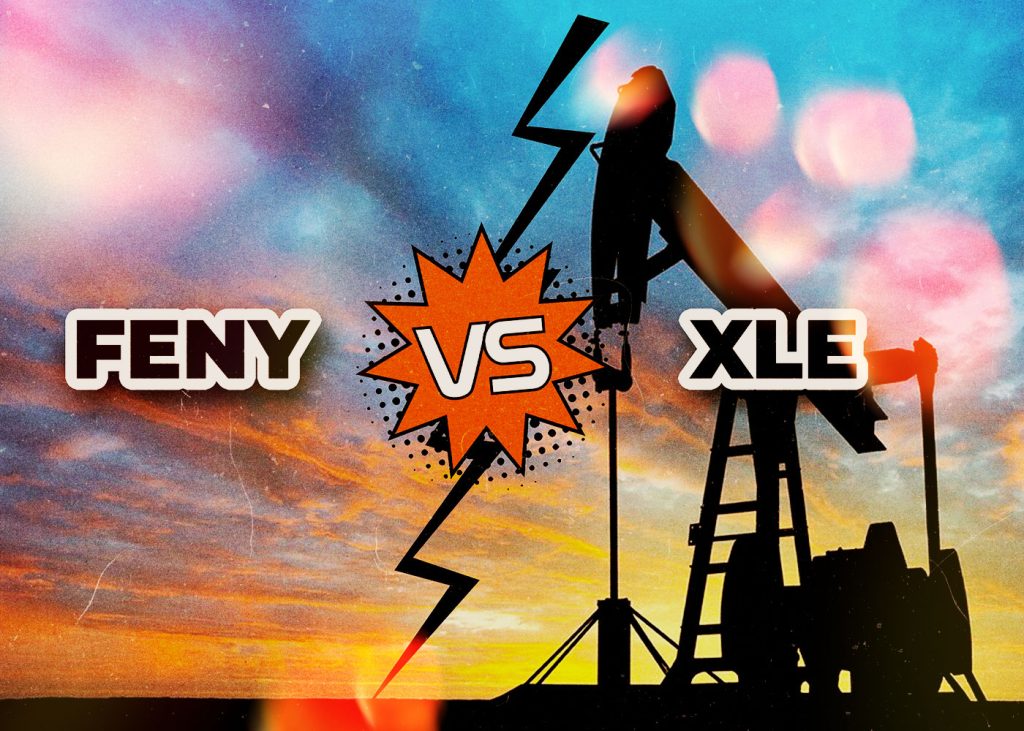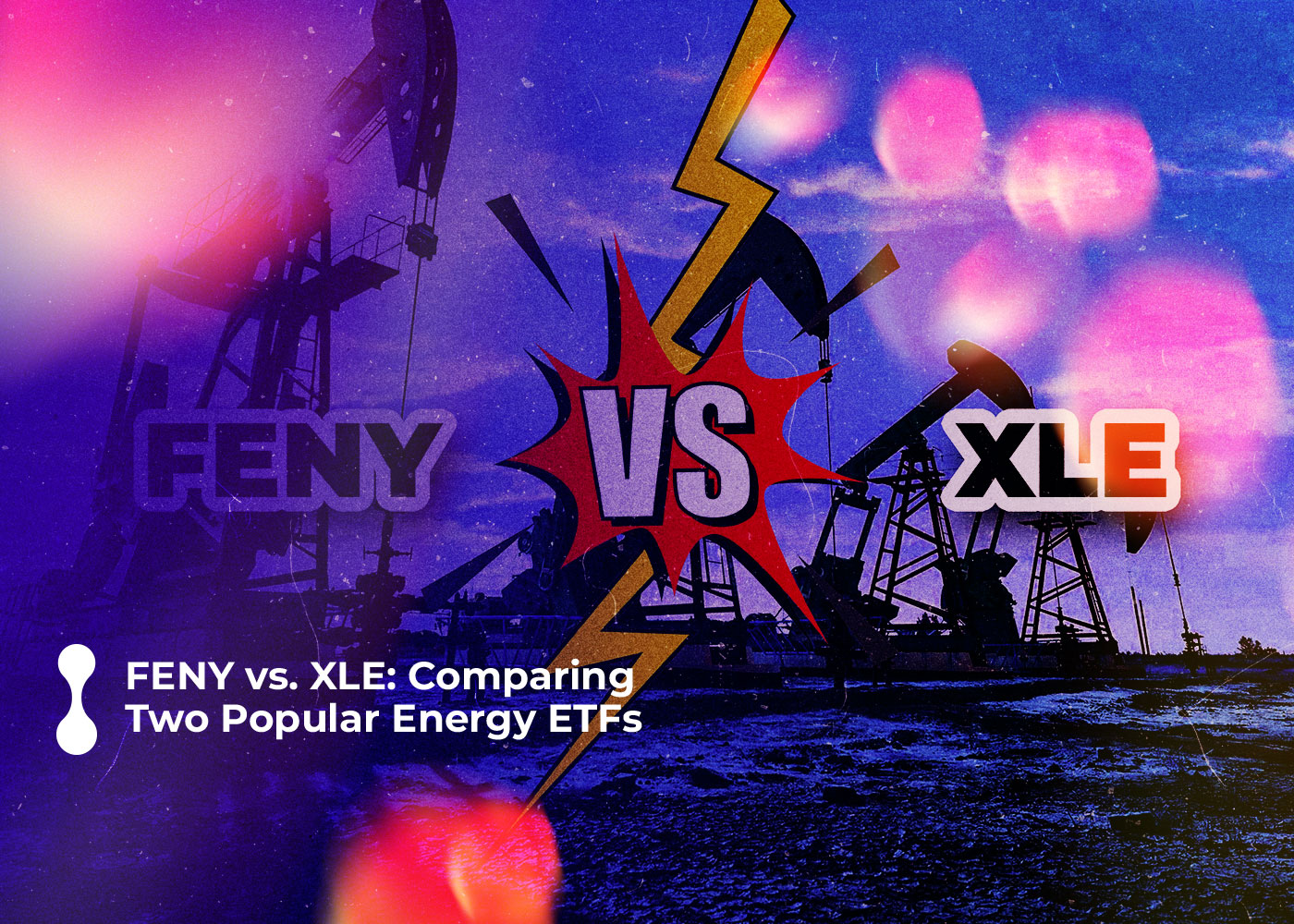Are you considering investing in an energy exchange-traded fund (ETF)? With so many options, knowing which ETFs are the best bets for your portfolio can be difficult. The Fidelity MSCI Energy Index ETY (FENY) and the SPDR Select Sector Fund – Energy Select Sector (XLE) are two of the most popular choices. Each of these funds offers exposure to different segments of the energy sector, making them both viable contenders for investors seeking strategic diversification. In this blog post, we’ll compare FENY vs. XLE to determine which one might better fit your portfolio. Read on to learn more!
FENY: Overview, Pros, and Cons
FENY is an abbreviation for the Fidelity MSCI Energy Index ETF, an ETF provided by Fidelity Investments that seeks to mimic the MSCI USA IMI Energy Index. This index measures the performance of energy sector companies in the U.S. equity market, including those in the oil, gas, and energy equipment and services sectors. If a person purchases FENY, they can invest in various energy-related stocks.
Here are some potential pros and cons of investing in FENY:
Pros:
- Diversification: FENY allows investors to invest in various energy-related stocks, potentially lowering the risk and impact of volatility in investing in a particular company.
- Cost-effective: Compared to mutual funds, ETFs are usually less expensive investment options, which makes them a budget-friendly method of accessing a particular industry or type of asset.
- Liquidity: FENY is an ETF, which means it is traded on exchanges just like a stock. This allows investors to buy and sell shares easily throughout the day.
- Potential for capital appreciation: Investors in FENY could experience growth in capital if the energy sector does well.
Cons:
- Concentrated risk: While FENY offers investors exposure to the energy sector, it’s important to note that this particular investment is concentrated in a single sector. As a result, it may be riskier than investing in a more diversified portfolio.
- Sector-specific risks: FENY’s performance can be influenced by risks that are unique to the energy sector, including fluctuations in commodity prices, changes in government policies, and regulatory risks.
- Passive management: FENY follows an index and does not have a team that actively manages it. Therefore, it does not make decisions on specific securities. This may restrict its ability to outperform actively managed funds.
- Limited exposure: FENY is an ETF that specifically targets the U.S. energy industry, which means it does not offer investors exposure to the global energy sector.

XLE: Overview, Pros, and Cons
The Energy Select Sector SPDR Fund is abbreviated as XLE. It is an ETF that aims to mirror the performance of the Energy Select Sector Index, which comprises energy firms from the S&P 500 index, such as those in the oil, gas, and energy equipment and services industries.
XLE and FENY both offer investors a way to access the energy sector, but they differ in some aspects. XLE invests in companies in the S&P 500 index, while FENY tracks the MSCI USA IMI Energy Index. Also, XLE has been around for longer than FENY, founded in 1998.
Here are some potential pros and cons of investing in XLE:
Pros:
- Diversification: Investors can gain exposure to various energy-related stocks within the S&P 500 index by investing in XLE. This diversified portfolio can help mitigate the volatility and risks of investing in individual companies.
- Liquidity: XLE is an ETF that can be traded on exchanges just like a stock, allowing investors to easily buy and sell shares throughout the trading day.
- Potential for capital appreciation: Investors may see capital appreciation from XLE if the energy sector performs well.
- Low-cost: The XLE ETF is managed passively and has low expense ratios, making it an affordable option to invest in the energy sector.
Cons:
- Concentrated risk: Investing in XLE can still be risky since it is focused on a single sector, even though it provides diversified exposure to the energy sector. It is recommended to invest in a more diversified portfolio to lower the risks.
- Sector-specific risks: The performance of XLE can be impacted by various risks specific to the energy sector, including changes in government policies, regulatory risks, and fluctuations in commodity prices.
- Passive management: The XLE merely follows an index and does not rely on active management to choose individual securities. As a result, its potential for outperforming actively managed funds may be restricted.
- Limited exposure: XLE is an ETF that solely targets the U.S. energy sector present in the S&P 500 index. It doesn’t allow investors to access the worldwide energy sector.
How to Choose the Best for You:
Here are some key similarities and differences between FENY and XLE that may help you choose which ETF to invest in:
Similarities:
- FENY and XLE are two exchange-traded funds that allow investors to invest in the U.S. equity market’s energy sector.
- Both ETFs are passively managed and track a market index.
- Investors can obtain diversified exposure to the energy sector from both ETFs, potentially reducing the risks associated with individual companies.
Differences:
- FENY and XLE track different indices. FENY follows the MSCI USA IMI Energy Index, while XLE follows the Energy Select Sector Index.
- The energy companies held within FENY and XLE may not be the same. FENY may invest in smaller energy companies, while XLE is restricted to the energy companies listed in the S&P 500 index.
- The expense ratios of FENY and XLE are not the same. According to April 2023 data, FENY has an expense ratio of 0.08%, while XLE has an expense ratio of 0.10%.
- XLE has been around for twenty years longer than FENY, as it was established in 1998, while FENY was established in 2013.
Final Words:
To sum up, both FENY and XLE are exchange-traded funds that allow investors to invest in the energy sector of the U.S. stock market. Although they have some commonalities, like passive management and broad exposure to the energy sector, they vary based on the indexes they follow, their holdings, cost ratios, and performance history. Deciding between FENY and XLE relies on an investor’s investment goals, risk-taking ability, and entire investment collection. It’s always wise to seek advice from a financial advisor before making any investment choices.
